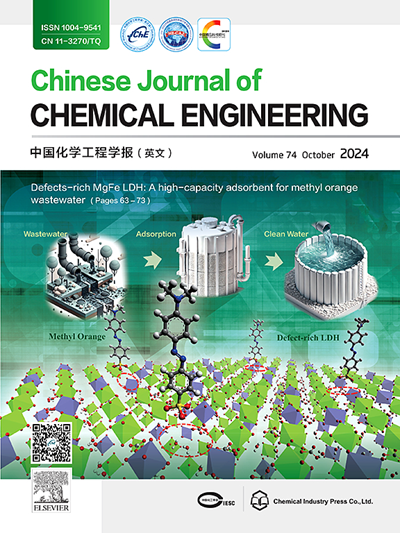Adsorption, separation and recovery performance of spherical PR/CMC/AC composites for cadmium-contaminated soil remediation
IF 3.7
3区 工程技术
Q2 ENGINEERING, CHEMICAL
引用次数: 0
Abstract
Activated carbon (AC) is considered to be an excellent adsorbent due to its high specific surface area and various functional groups. AC powders are available in sizes ranging from 44 to 150 μm. Its particle size prevent its separation from the soil. Therefore, when AC powder is applied to Cd-contaminated soil, it only reduces the bioavailability of Cd and Cd is not necessarily removed but semi-immobilized. Recovery of adsorbent materials from the soil is therefore a preferred soil remediation method. In order to achieve the separation of Cd from soil and the recovery and reuse of AC, a batch of phenolic resin (PR) -carboxymethyl cellulose (CMC)-activated carbon (AC) composite (PCC-800) with uniform particle diameter (diameter 0.8 mm) and high compressive strength was prepared. PCC-800 composites were made of PR/CMC/AC calcined at 800 °C in a certain ratio. The Barrett−Joyner−Halender results showed that the PCC-800 spheres own a mesoporous structure. The compressive strength of PCC-800 pellets was 20.6 N. After first adsorption cycle, total Cd in the soil decreased by 52.18% while bioavailable Cd decreased to 25.68% of the original soil. After three cycles, the recovery rates of PCC-800 were 90.37% and the adsorption regeneration was 72.73%. The PCC-800 immobilized Cd by adsorption, precipitation and complexation reaction. This study demonstrates the potential for developing adsorbents that are both easily separable from soil and highly effective in adsorption.
球形PR/CMC/AC复合材料对镉污染土壤的吸附、分离和回收性能
活性炭因其高比表面积和多种官能团而被认为是一种优良的吸附剂。交流粉末的尺寸范围为44 ~ 150 μm。它的颗粒大小阻止了它与土壤分离。因此,在Cd污染的土壤中施用AC粉,只会降低Cd的生物利用度,Cd不一定会被去除,而是半固定化。因此,从土壤中回收吸附物质是一种首选的土壤修复方法。为实现土壤中Cd的分离和AC的回收再利用,制备了一批粒径均匀(直径0.8 mm)、抗压强度高的酚醛树脂(PR) -羧甲基纤维素(CMC)-活性炭(AC)复合材料(PCC-800)。将PR/CMC/AC按一定比例在800℃下煅烧制成PCC-800复合材料。Barrett - Joyner - Halender结果表明PCC-800球具有介孔结构。PCC-800颗粒抗压强度为20.6 n,第一次吸附循环后,土壤中总Cd下降了52.18%,生物有效Cd下降到原土壤的25.68%。3次循环后,PCC-800的回收率为90.37%,吸附再生率为72.73%。PCC-800通过吸附、沉淀和络合反应固定化镉。该研究显示了开发易于与土壤分离且具有高效吸附的吸附剂的潜力。
本文章由计算机程序翻译,如有差异,请以英文原文为准。
求助全文
约1分钟内获得全文
求助全文
来源期刊

Chinese Journal of Chemical Engineering
工程技术-工程:化工
CiteScore
6.60
自引率
5.30%
发文量
4309
审稿时长
31 days
期刊介绍:
The Chinese Journal of Chemical Engineering (Monthly, started in 1982) is the official journal of the Chemical Industry and Engineering Society of China and published by the Chemical Industry Press Co. Ltd. The aim of the journal is to develop the international exchange of scientific and technical information in the field of chemical engineering. It publishes original research papers that cover the major advancements and achievements in chemical engineering in China as well as some articles from overseas contributors.
The topics of journal include chemical engineering, chemical technology, biochemical engineering, energy and environmental engineering and other relevant fields. Papers are published on the basis of their relevance to theoretical research, practical application or potential uses in the industry as Research Papers, Communications, Reviews and Perspectives. Prominent domestic and overseas chemical experts and scholars have been invited to form an International Advisory Board and the Editorial Committee. It enjoys recognition among Chinese academia and industry as a reliable source of information of what is going on in chemical engineering research, both domestic and abroad.
 求助内容:
求助内容: 应助结果提醒方式:
应助结果提醒方式:


